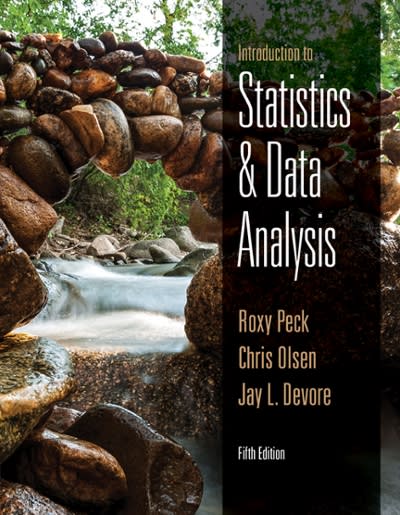5.32 Northern flying squirrels eat lichen and fungi, which makes for a relatively low quality diet.
Question:
5.32 ● Northern flying squirrels eat lichen and fungi, which makes for a relatively low quality diet. The authors of the paper “Nutritional Value and Diet Preference of Arboreal Lichens and Hypogeous Fungi for Small Mammals in the Rocky Mountains” (Canadian Journal of Zoology [2008]: 851–862) measured nitrogen intake and nitrogen retention in six flying squirrels that were fed the fungus Rhizopogon.
Data read from a graph that appeared in the paper are given in the table below. (The negative value for nitrogen retention for the first squirrel represents a net loss in nitrogen.)
Nitrogen Intake, x (grams)
Nitrogen Retention, y (grams)
0.03 20.04 0.10 0.00 0.07 0.01 0.06 0.01 0.07 0.04 0.25 0.11
a. Construct a scatterplot of these data.
b. Find the equation of the least-squares regression line.
c. Based on this line, what would you predict nitrogen retention to be for a flying squirrel whose nitrogen intake is 0.06 gram?
d. What is the residual associated with the observation (0.06, 0.01)?
e. Look again at the scatterplot from Part (a). Which observation is potentially influential? Explain the reason for your choice. (Hint: See Example 5.9.)
f. When the potentially influential observation is deleted from the data set, the equation of the least-squares regression line fit to the remaining five observations is y⁄
5 20.037 1 0.627x. Use this equation to predict nitrogen retention for a flying squirrel whose nitrogen intake is 0.06. Is this prediction much different from the prediction made in Part (c)?
Step by Step Answer:

Introduction To Statistics And Data Analysis
ISBN: 9781305445963
5th Edition
Authors: Roxy Peck, Chris Olsen, Jay L Devore





